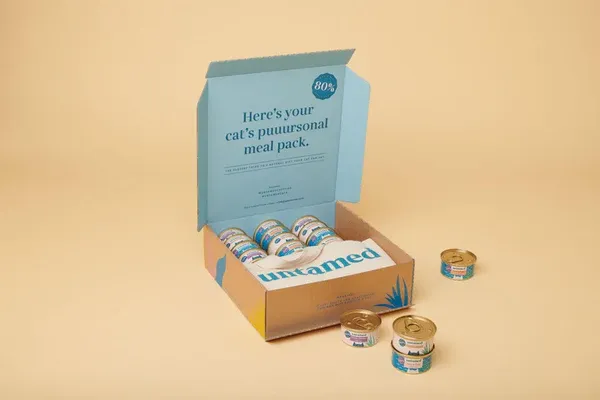If you’ve always dreamed of owning a majestic Maine Coon but worry about cat allergies, you’re not alone. Many potential owners search for “Maine Coon Hypoallergenic” traits before committing. The truth? Maine Coon cats are not truly hypoallergenic, yet they can be manageable for those with mild sensitivities. No cat breed, whether long-haired like the Maine Coon, short-haired varieties, or even hairless ones like the Sphynx, produces zero allergens. The key lies in understanding allergens and adopting smart care strategies to minimize exposure.
This comprehensive guide covers everything from the science behind cat allergens to practical remedies for living with a Maine Coon despite allergies. Whether you’re a first-time cat parent or managing ongoing symptoms, these insights will help you decide if this gentle giant fits your home.
 Maine Coon cat looking annoyed while hiding, illustrating allergy concerns for owners
Maine Coon cat looking annoyed while hiding, illustrating allergy concerns for owners
Understanding Cat Allergens: Why Maine Coons Aren’t Hypoallergenic
The myth that fur causes cat allergies persists, but the real trigger is Fel d 1, a protein produced by all cats’ sebaceous glands. This allergen appears in saliva, urine, feces, skin dander, tears, and mucus. Studies, such as those published in the Journal of Allergy and Clinical Immunology, show Fel d 1 affects 80-95% of cat allergy sufferers. Lesser allergens like Fel d 2 and Fel d 4 play smaller roles.
Maine Coons, with their luxurious coats, don’t produce more Fel d 1 than other breeds—it’s universal across cats regardless of fur length, age, or sex. Allergen levels depend on grooming habits, diet, and environment rather than breed alone. For allergy management, focus on reducing contact with these sources.
Can Allergy Sufferers Own a Maine Coon?
For mild allergies, yes—Maine Coons can coexist with owners using simple precautions. Symptoms like sneezing, runny nose, itchy eyes, or mild skin irritation often respond to over-the-counter antihistamines such as cetirizine or loratadine. Many owners report symptom-free days with diligent care, without needing medication.
However, severe reactions—hives, asthma attacks, vomiting, dizziness, or anaphylaxis—warrant caution. Consult an allergist before adoption, and keep epinephrine auto-injectors accessible. Experts from the American College of Allergy, Asthma & Immunology emphasize personalized assessment over breed assumptions.
 Maine Coon cat in a dramatic pose, representing the challenges of allergies versus enjoyment
Maine Coon cat in a dramatic pose, representing the challenges of allergies versus enjoyment
Practical Tips for Living with Maine Coons and Allergies
Effective allergy control involves three layers: personal hygiene, home environment tweaks, and cat-specific care. Implementing these reduces airborne dander and Fel d 1 significantly.
Personal Hygiene Precautions
Minimize direct contact:
- Avoid letting your Maine Coon lick your face or skin.
- Wash hands thoroughly after petting.
- Refrain from touching your face post-interaction.
- Use gloves for outdoor tasks if your cat roams.
- Enlist non-allergic family members for litter box cleaning or grooming.
Before visiting cat-owning friends, preempt with antihistamines, masks, or allergen sprays. Always launder clothes afterward to remove clinging dander.
 Maine Coon cat on a bed, defying rules with a cheeky expression
Maine Coon cat on a bed, defying rules with a cheeky expression
Environmental Controls to Trap Allergens
Create an allergen-resistant space:
| Area | Strategies |
|---|---|
| Air | Install HEPA filters; avoid fans in cat zones. |
| Floors/Surfaces | Daily HEPA-vacuuming; opt for low-dust litter; minimize clutter like rugs or toys. |
| Furniture | Use washable covers; train your Maine Coon off beds and sofas—provide a dedicated cat tree suited to their impressive size. |
These steps, backed by environmental allergy research, can cut indoor allergens by up to 90%.
Optimizing Your Maine Coon’s Care
Healthy cats shed less. Prioritize grooming and nutrition to curb dander.
 Maine Coon being gently handled during grooming
Maine Coon being gently handled during grooming
Grooming Techniques for Low-Allergen Homes
- Brush outdoors every 2-3 days with deshedding tools—let non-allergic helpers handle it, given the breed’s docile temperament.
- Wipe coat with a damp cloth to trap loose fur.
- Bathe weekly with mild, degreasing shampoos.
Regular sessions prevent fur buildup, directly lowering Fel d 1 spread.
Nutrition’s Role in Reducing Shedding
Diet influences coat health profoundly. Poor nutrition causes excessive shedding via dry skin and weak follicles. Feed a balanced diet rich in:
- Proteins (>50%): From whole meats like chicken, turkey, tuna, salmon—high in taurine and cysteine for fur strength.
- Omega-3 Fats: From fish for hydration and shine.
- Vitamins/Minerals: Vitamin E, selenium, iron for skin circulation.
Wet, meat-based canned food outperforms dry kibble, which dehydrates skin and boosts dander. Avoid raw diets due to contamination risks leading to infections and more shedding. Quality options like those with 60%+ whole meat promote glossy coats and fewer hairballs.
 Promotional image of cat food enhancing coat health for fluffy breeds
Promotional image of cat food enhancing coat health for fluffy breeds
Promoting Coat Health with Premium Nutrition
Brands like Untamed exemplify ideal nutrition: human-grade wet foods in gravy or jelly, grain-free, with 60-63% whole proteins, vet-formulated for digestibility. These minimize allergens by fostering robust skin—owners note less shedding within weeks, alongside better digestion and immunity. For fussy eaters or sensitive stomachs, single-protein recipes shine.
Track progress:
| Timeline | Benefits |
|---|---|
| Week 1 | Hydration boost, cleaner litter. |
| Week 8 | Shinier coat, reduced hairballs. |
| Week 16+ | Optimal weight, fewer illnesses. |
 Happy Maine Coon enjoying harmonious living, symbolizing allergy management success
Happy Maine Coon enjoying harmonious living, symbolizing allergy management success
Much like caring for a white Bengal kitten, Maine Coons thrive on tailored care.
Final Thoughts: Harmonious Living with Your Maine Coon
Maine Coons aren’t hypoallergenic, but with hygiene, environmental tweaks, grooming, and superior nutrition, allergy sufferers can enjoy their company. Start with mild symptom checks, vet consultations, and consistent routines for the best outcomes.
Ready to try? Consult your doctor, trial quality wet foods, and create an allergen-smart home. Your fluffy companion awaits—symptoms managed, bond strengthened.
References
- Fel d 1 Allergen Study
- Cat Allergy Research
- Allergen Spread via Clothing
- American College of Allergy, Asthma & Immunology guidelines on pet allergens.
